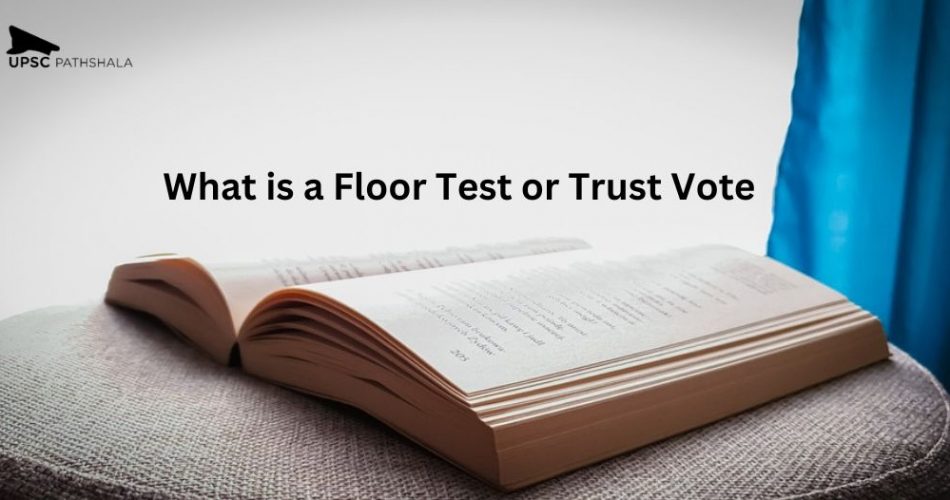What is a floor test or trust vote? Well if you are into civil service preparation, you must be hearing this term a lot in recent days on news channels and other media platforms. If you want to know everything about it, you should read this article till the end.
What is a Floor Test or Trust Vote?
A floor test is a constitutional mechanism. It’s acquainted to verify if the incumbent government enjoys the support of the lawmakers. This selection methodology happens at intervals between the state’s lawmakers or the Lok Sabha at the central level. You must be aware that the chief minister of any state in India is appointed by the Governor. The appointed chief minister usually belongs to the sole largest party or coalition with the ‘magic number’.
The range is the total variety of seats required to create a government or confine power. It is the halfway mark, plus one. Simply just in case of a tie, the Speaker casts the deciding vote. However, at times, a government’s majority is usually questioned. The leader of the party claims the majority has to manoeuvre a vote of confidence. If some MLAs keep absent or abstain from the choice, the majority is counted on the thought of this and the possibility.
This is an aspect that reduces the strength of the House. Also, in turn, brings down the majority mark. The option technique can happen orally, with electronic gadgets or with a ballot methodology. The Governor will even raise the Chief Minister to prove his or her majority at intervals in the House if the stability of the government comes into question.
Composite Floor Test
While there’s another test, the Composite floor test, that is necessitated once quite one person stakes the claim to make the govt, and also the majority isn’t clear. Governor might decide on a session to assess who has the majority.
The majority is counted to support this gift and option and this could be done through a voice vote additionally. Recently, the Supreme Court of India has commanded that a Governor will demand a floor test any time he/she objectively feels a government in power has lost the confidence of the House and is on shaky ground.
UPSC Notes
Trust Vote
A confidence motion or a vote of confidence or a trust vote is sought-after by the govt in power on the ground of the House. It permits the electoral representatives to see if the Council of Ministers commanded the confidence of the House. The thought underlying the trust vote is to uphold the political responsiveness of the electoral government to the State lawmakers. A no-confidence motion, a vote of no-confidence, or a no-trust vote, are often sought-after by any House member to specify that they do not consider in the government.
Floor Test
It is a term used for the test of the majority. If there are doubts against the Chief Minister (CM) of a State, he/she is often asked to prove the majority within the House. In the case of a coalition government, the CM is also asked to move a vote of confidence and win a majority. Within the absence of a transparent majority, once there’s quite one individual staking claim to make the govt, the Governor might demand a session to ascertain who has the majority to make the govt. Some legislators are also absent or selected not to vote. The numbers are then thought about based mostly solely on those MLAs who were present to vote.
Conclusion
Well, if you liked this article and grabbed all the information present here, you must surely visit the UPSC Pathshala website, the best online upsc coaching to acknowledge much more than this. The recent topics are given on the website for your UPSC preparation. To shape your preparation even better, do visit this best online upsc coaching.







